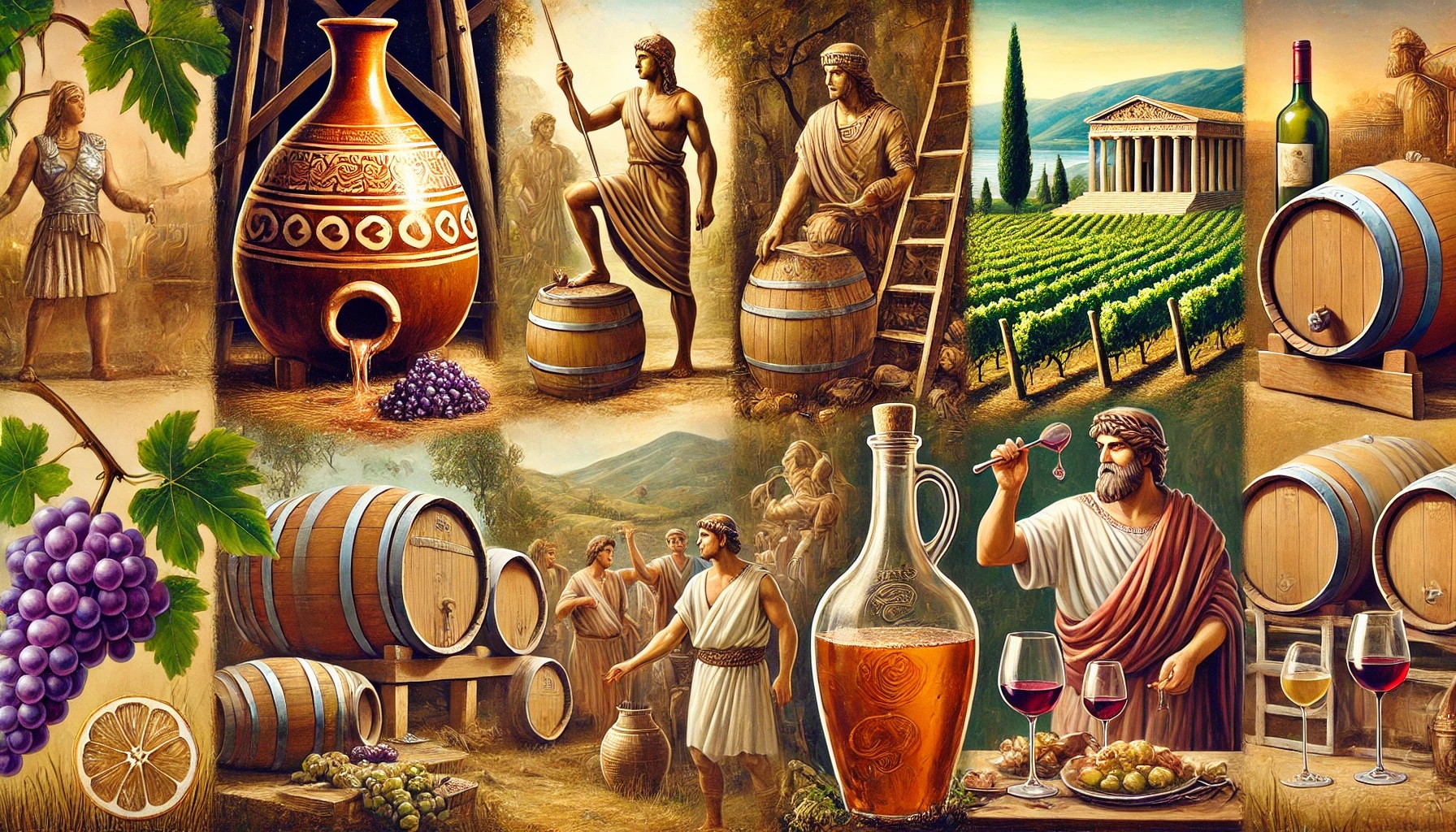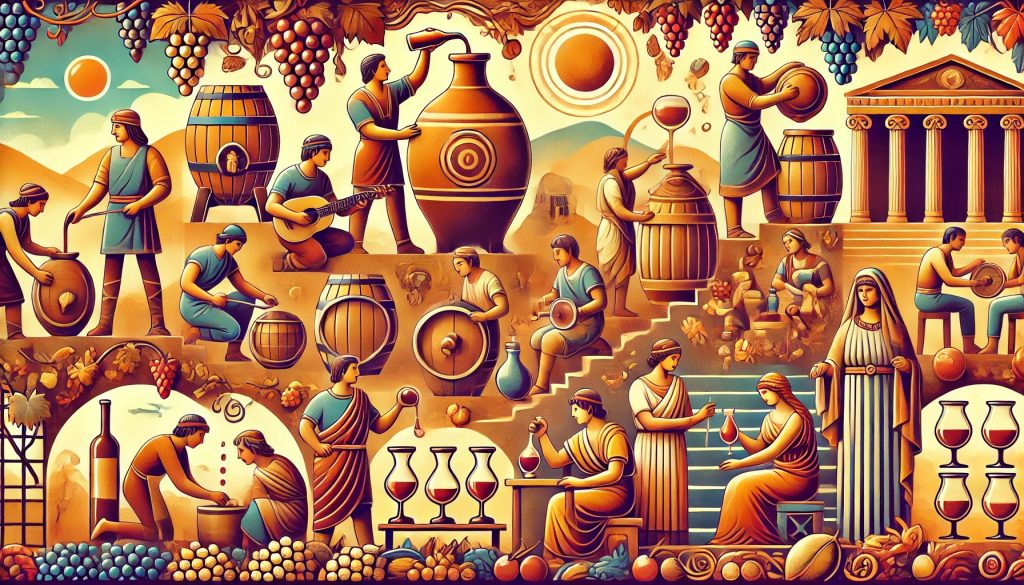
Wine. We swirl it, sip it, and sometimes even spill it (oops). But have you ever wondered where it all began? Thousands of years ago, some brave soul looked at a bunch of grapes and thought, “What if I let these rot for a while and then drink the juice?” That moment of curiosity turned into the ancient art of winemaking. Fast forward a few millennia, and here we are with more varieties than we can count, but the roots of this beloved drink are as old as civilization itself.
Let’s look at the grape-stained story of ancient winemaking traditions.
The First Sip: Georgia and the Birth of Wine
Surprise, surprise! The birthplace of wine probably wasn’t some wine region in France or Italy. Nope. The credit seems to be going to Georgia (the country, not the U.S. state famous for peaches). Archaeologists have discovered evidence of wine production dating back 8,000 years! Picture this: ancient Georgians stomping grapes with their bare feet (probably while cracking jokes) and storing the juice in large clay pots called qvevris. These underground pots allowed the wine to ferment naturally, and guess what? Georgians still use this method today. Talk about sticking to tradition!
The idea was simple: bury the qvevri, let nature take its course, and voilà – wine! And while modern winemaking has its fancy gadgets and stainless steel tanks, there’s something undeniably cool about the simplicity of this ancient technique.
Egypt: Wine Fit for the Afterlife
The ancient Egyptians had their priorities straight: when they weren’t busy building giant pyramids or making impressive eyeliner, they were making wine. In fact, they believed wine was so essential that they included it in tombs for the afterlife. Because, of course, what’s eternal rest without a glass of red?
Egyptians mostly produced wine from red grapes, and they had a very specific reason for this: they thought the color resembled the blood of Osiris, their god of the afterlife. Wine wasn’t just a drink; it was a sacred symbol. Archaeologists have found paintings in tombs depicting harvest festivals and winemaking scenes, showing just how central wine was to their culture.
And because the Egyptians were overachievers, they even labeled their wine jars with the vintage and vineyard location. Fancy!
Greece: Where Wine Met Philosophy
Now, if there’s one thing the ancient Greeks knew how to do, it was philosophize… and drink wine. Often at the same time! For them, wine wasn’t just a beverage; it was a social event, a deep dive into the meaning of life, and a way to make friends – or frenemies.
The Greeks held symposia – gatherings where wine flowed, and deep conversations (or arguments) followed. These were essentially the first wine parties, and every glass was an opportunity to discuss philosophy, politics, or who made the best feta cheese. The Greek god of wine, Dionysus, was even associated with madness and ecstasy. Basically, wine was believed to blur the line between order and chaos. Sounds fun, right?
But beyond the partying, the Greeks contributed significantly to winemaking techniques. They introduced the concept of adding herbs and spices to wine, and they spread their viticultural knowledge far and wide as they established colonies throughout the Mediterranean. And let’s not forget – their amphorae (large clay containers for wine) became the ancient world’s version of a wine label. Stylish and practical.

Roman Bacchanalia: Wine for the Masses
Ah, the Romans. Masters of engineering, conquerors of lands, and, most importantly, lovers of wine. The Romans didn’t just enjoy wine; they mass-produced it. They expanded vineyards across Europe, perfecting many techniques still used today. They introduced wooden barrels, used sulfur to preserve wine, and even developed early forms of grape presses.
But the real party trick? The Bacchanalia. These were wild, wine-fueled festivals in honor of Bacchus, the Roman god of wine. Think toga parties but with way more chaos and probably fewer red Solo cups. These celebrations were so over-the-top that the Roman government eventually had to step in and ban them.
Romans also had a bit of a “wine for all” attitude, ensuring it was available to every social class. Rich, poor, it didn’t matter – everyone had a cup in hand. If you were a Roman and didn’t drink wine, you were probably in the minority. And hey, who wants to be the odd one out?
China: Rice and Grape Wines
When we think of wine, we might not immediately think of China, but ancient China had its own winemaking traditions – and they date back about 9,000 years, possibly even earlier than Georgia. The difference? Chinese winemaking involved both grape wine and rice wine. They didn’t discriminate when it came to fermentation.
The Chinese had an elegant approach to winemaking, often blending wines with herbs and flowers. They believed wine had medicinal properties, so in ancient China, drinking wine was practically a health regimen. Think of it like sipping kombucha today, but way more ancient and with better results!
The Persian Puzzle: Shiraz Wine, Perhaps?
Iran (ancient Persia) boasts a long winemaking tradition as well. In fact, the name Shiraz, now famous for the wine grape, was once a city in Persia known for producing exceptional wine. Legend has it that even the great poet Hafiz waxed poetic about the wines of Shiraz, though this is a bit of a historical mystery. Still, ancient Persians loved their wine, and the tradition lived on for centuries.
The Persians may have even been pioneers of certain winemaking technologies, such as early versions of wine storage systems. Wine was central to their religious rituals and daily life, symbolizing both pleasure and the divine.
Conclusion: Why We Owe It All to the Ancients
So, this was the little tour through ancient winemaking traditions. From Georgia’s underground qvevris to Rome’s wine-for-all mentality, each culture brought its own unique twist to the table. The next time you enjoy a glass of wine, remember: you’re partaking in a tradition that’s been around for thousands of years, steeped in history, culture, and, let’s be honest, some serious partying.
Ancient winemakers didn’t have temperature-controlled tanks or fancy aerators, but they didn’t need them. They had grapes, patience, and a deep appreciation for the fermented fruit of their labor.
[…] the heart of Tuscany, where ancient winemaking traditions meet cutting-edge innovation, Querciabella stands as a beacon of quality and sustainability. Among […]
[…] the way, have you heard about ancient winemaking traditions? It’s fascinating to see how winemaking has evolved from ancient methods to today’s […]
[…] in how tradition and modernity can beautifully co-exist, you might enjoy reading about how ancient winemaking traditions have stood the test of […]